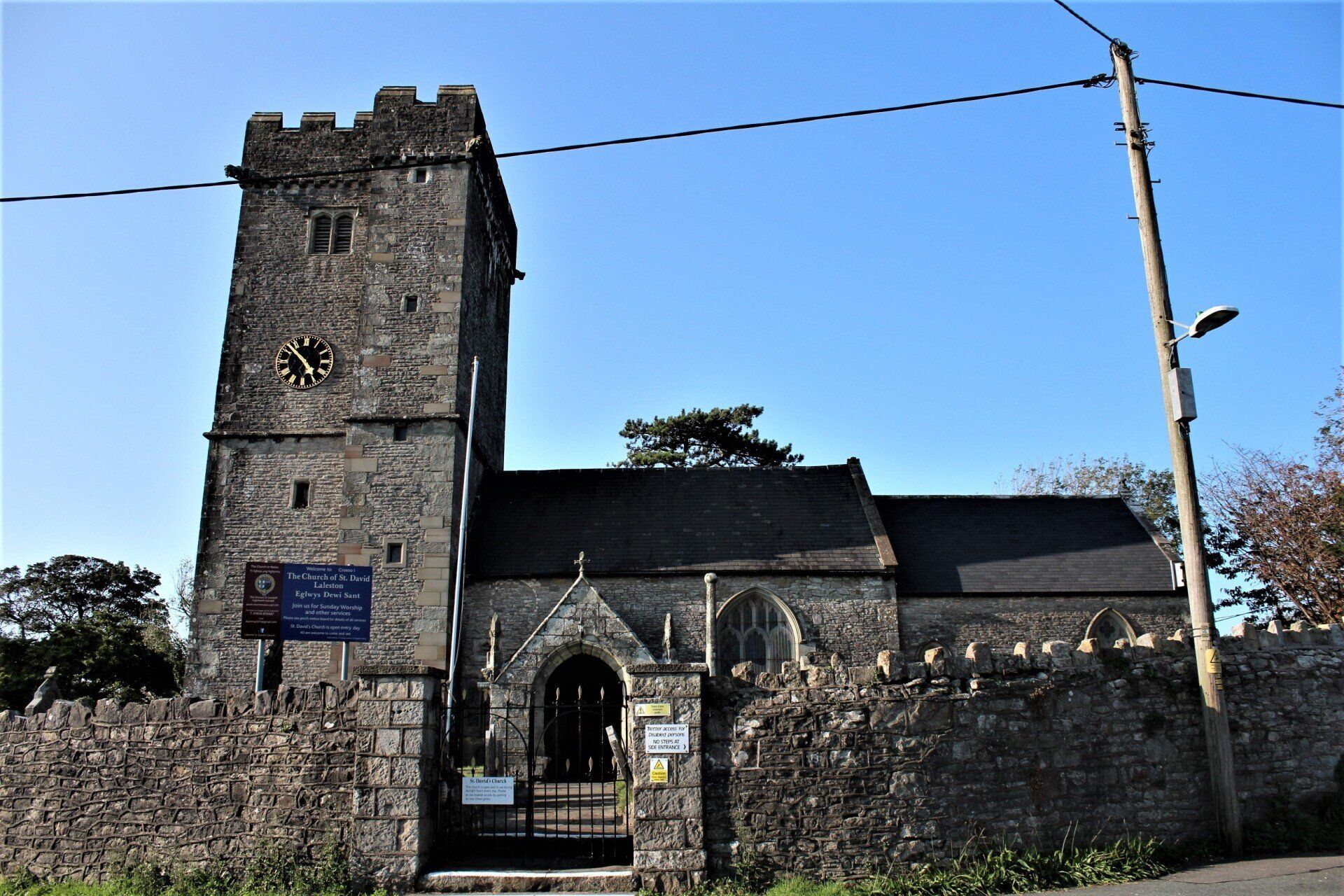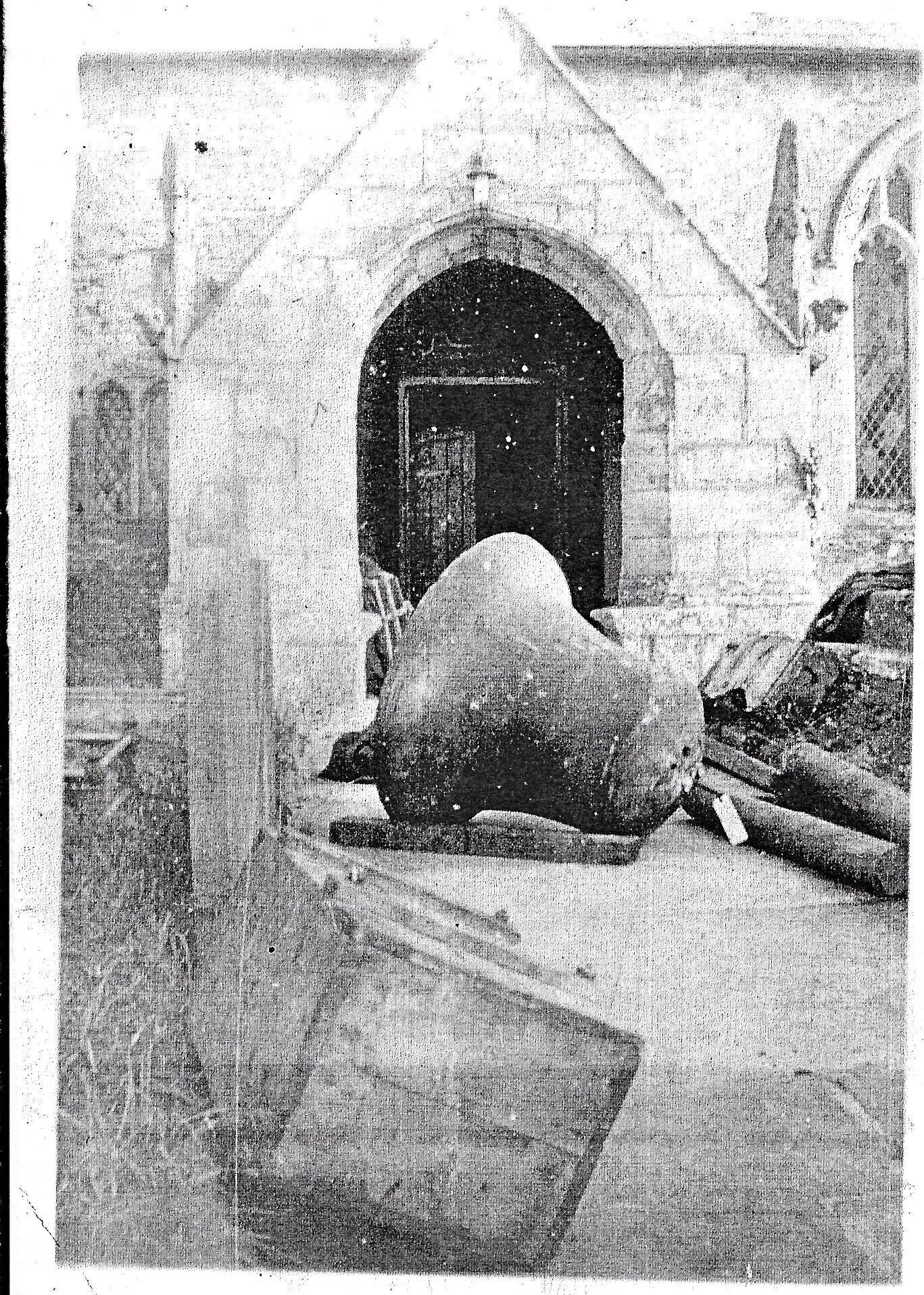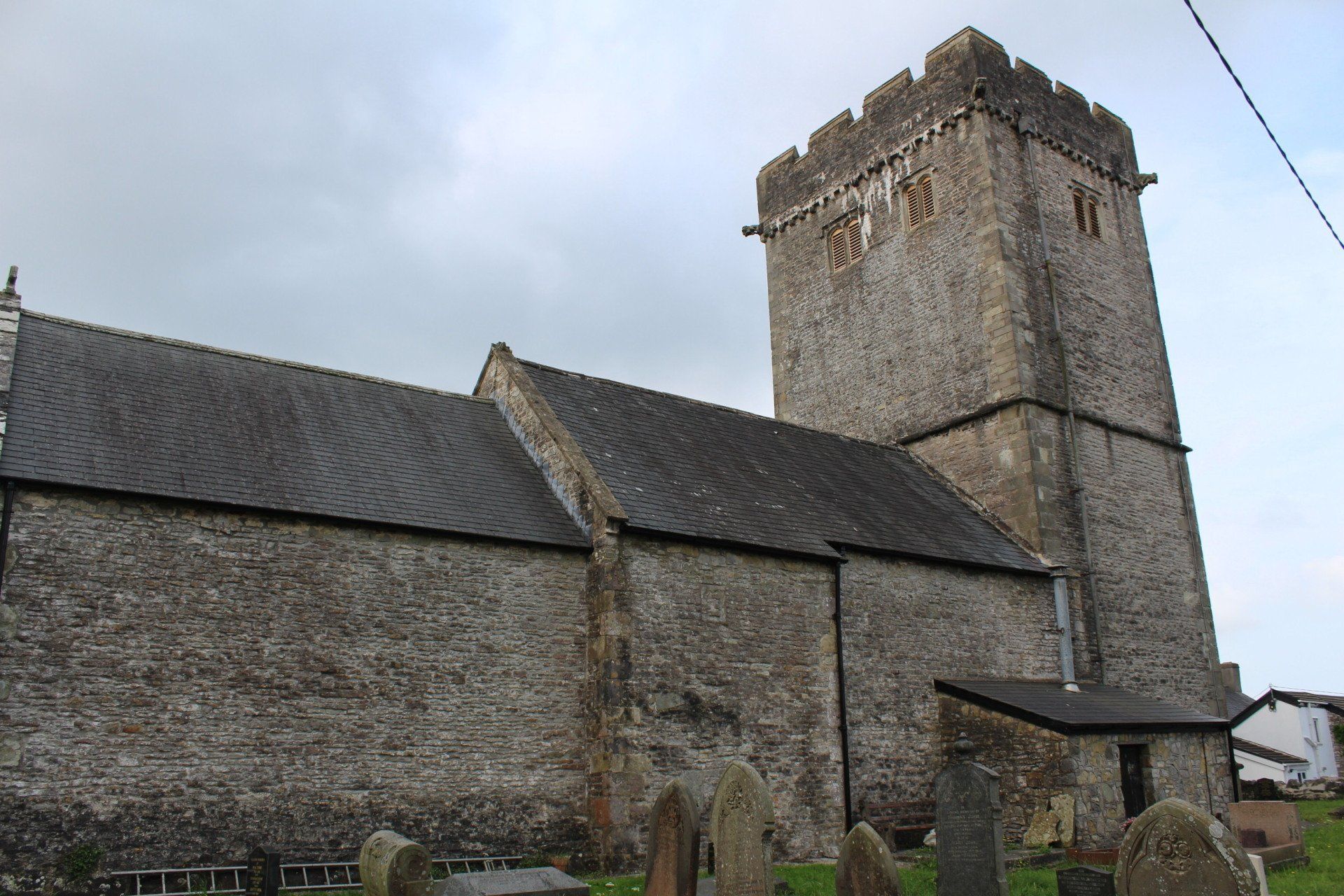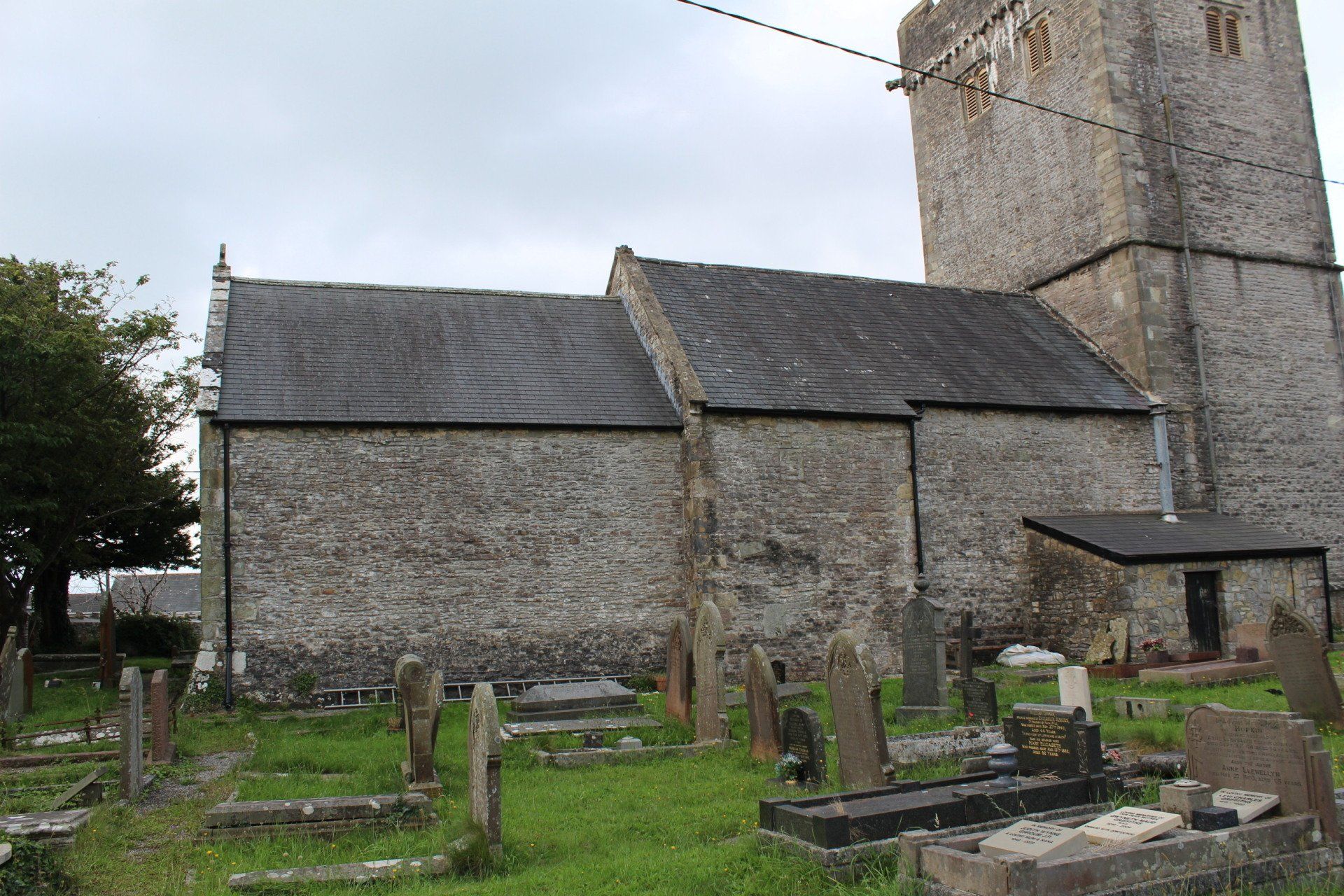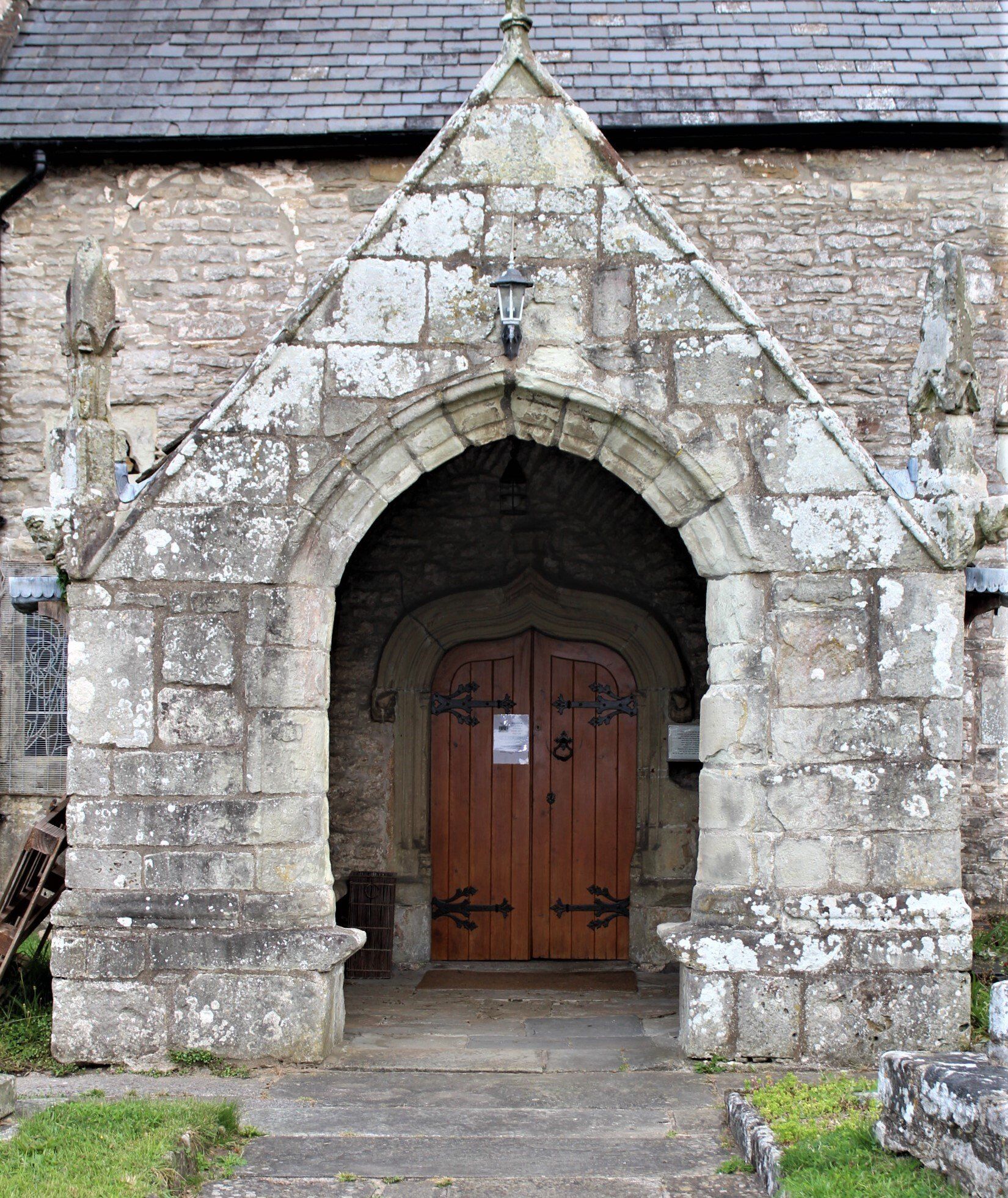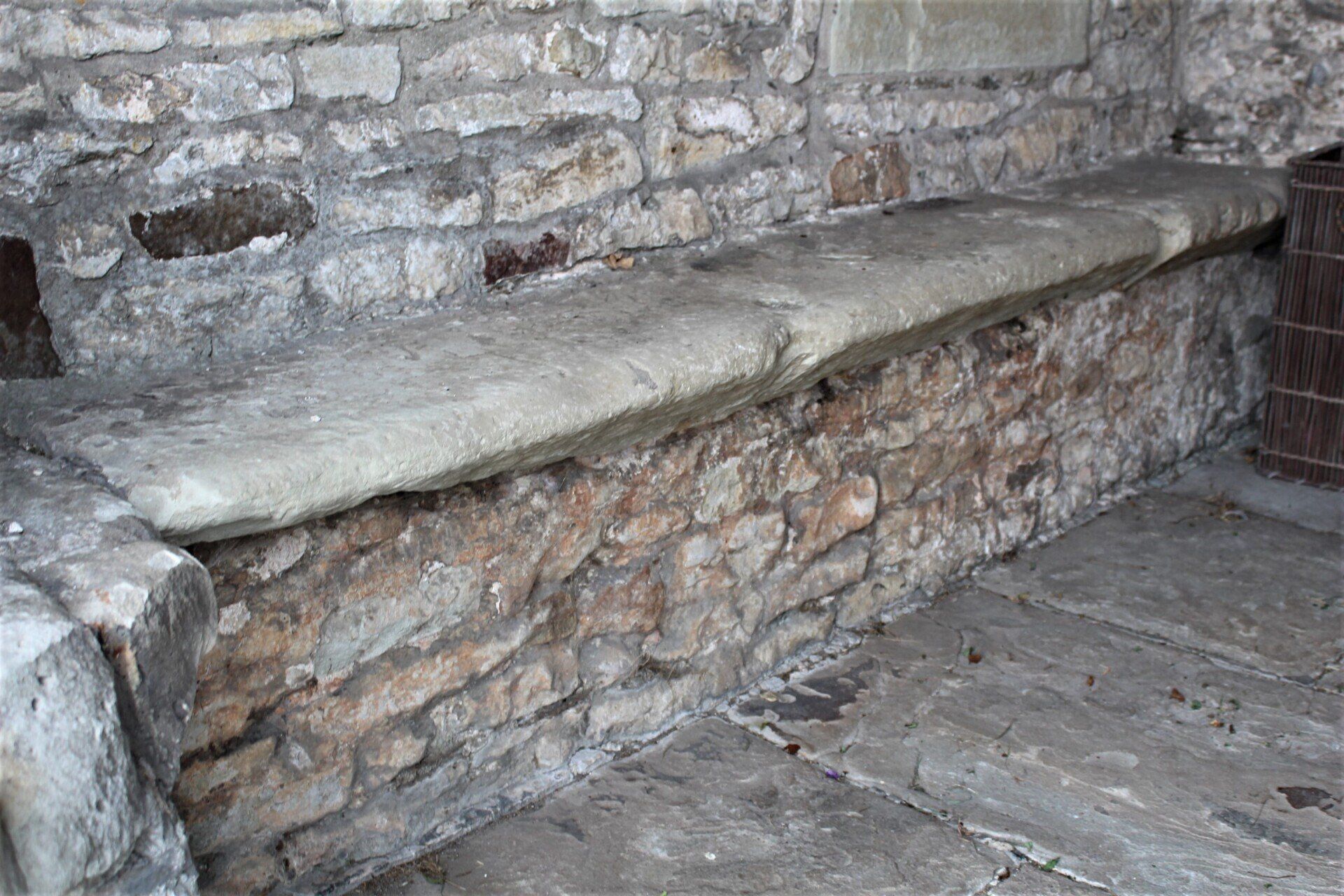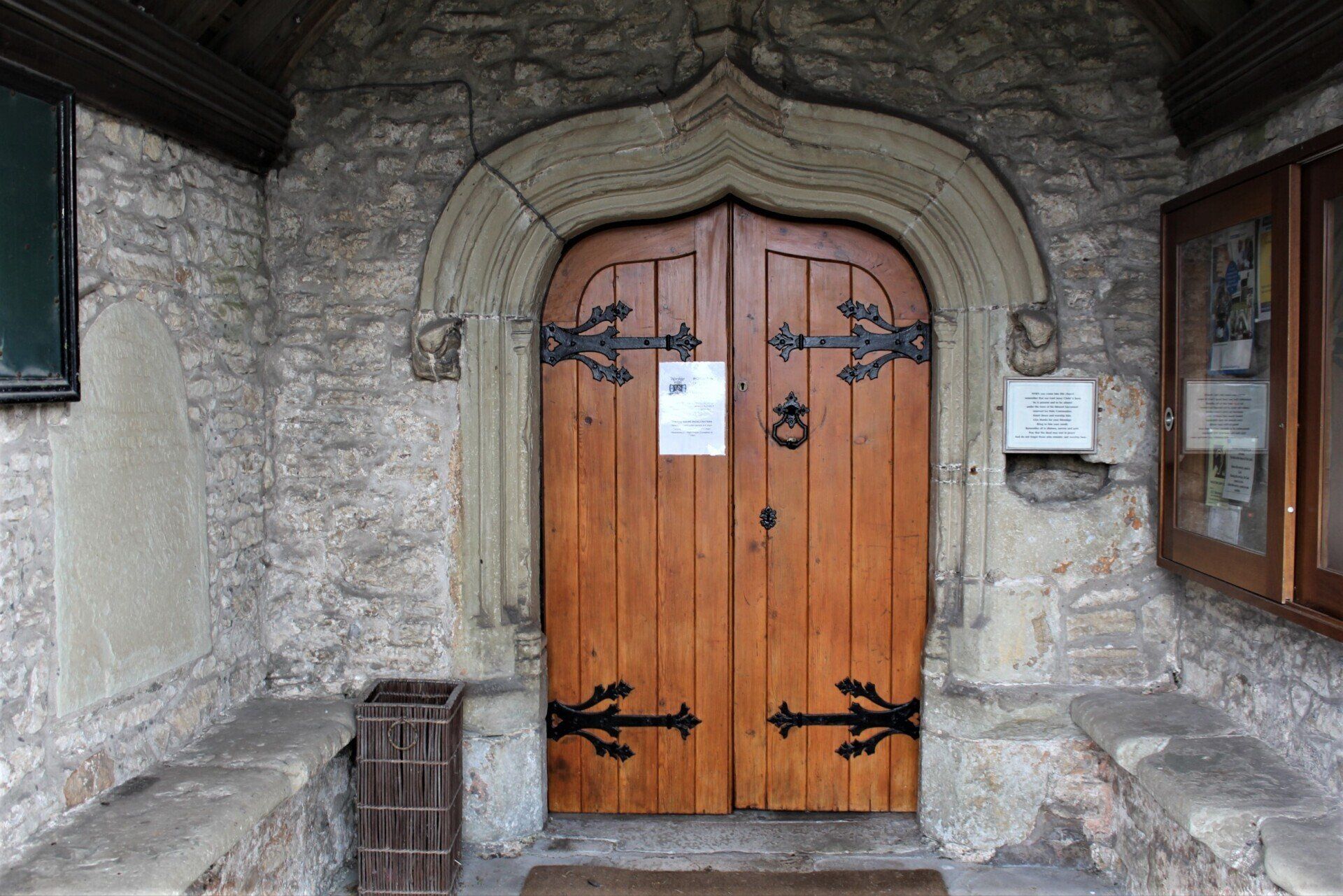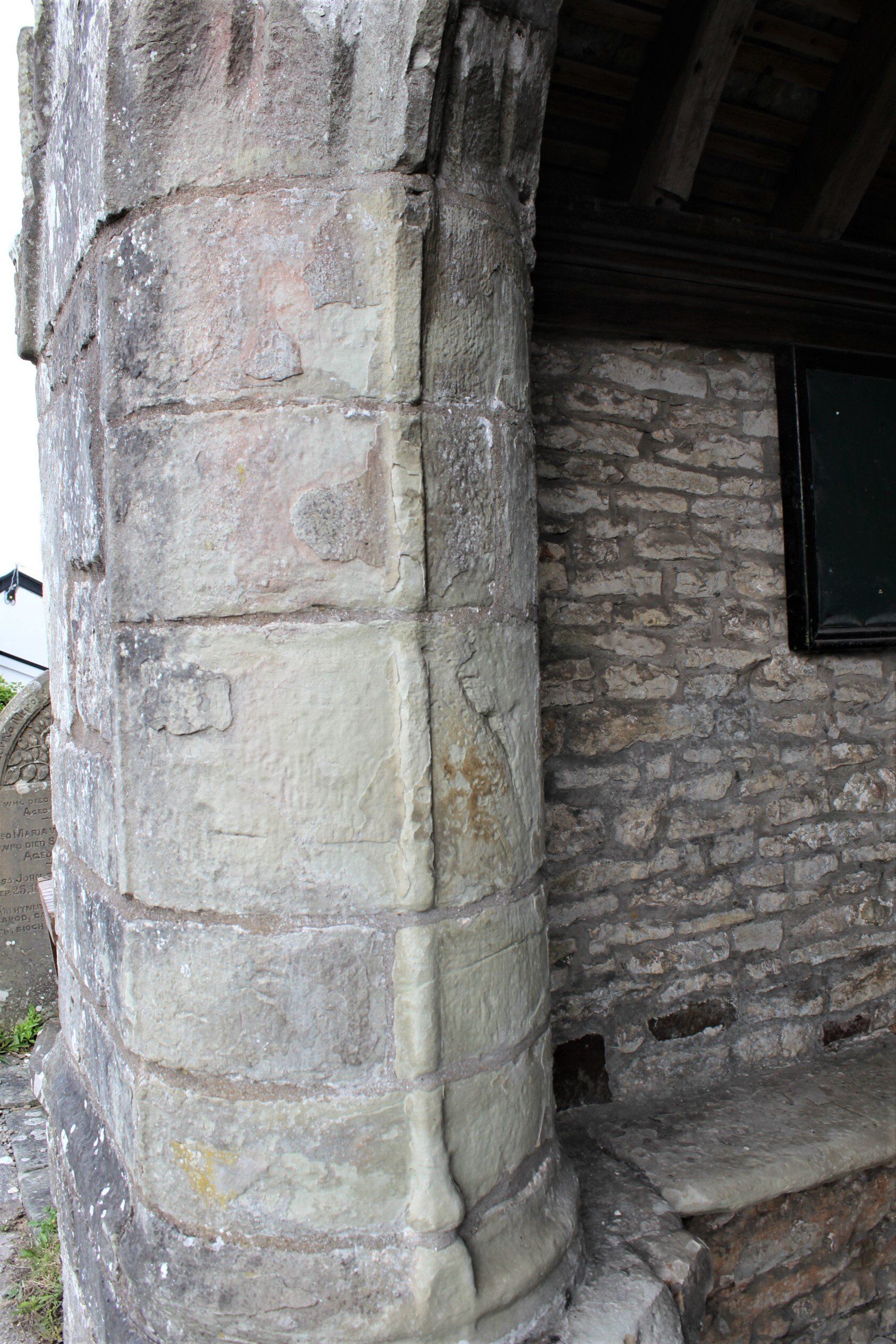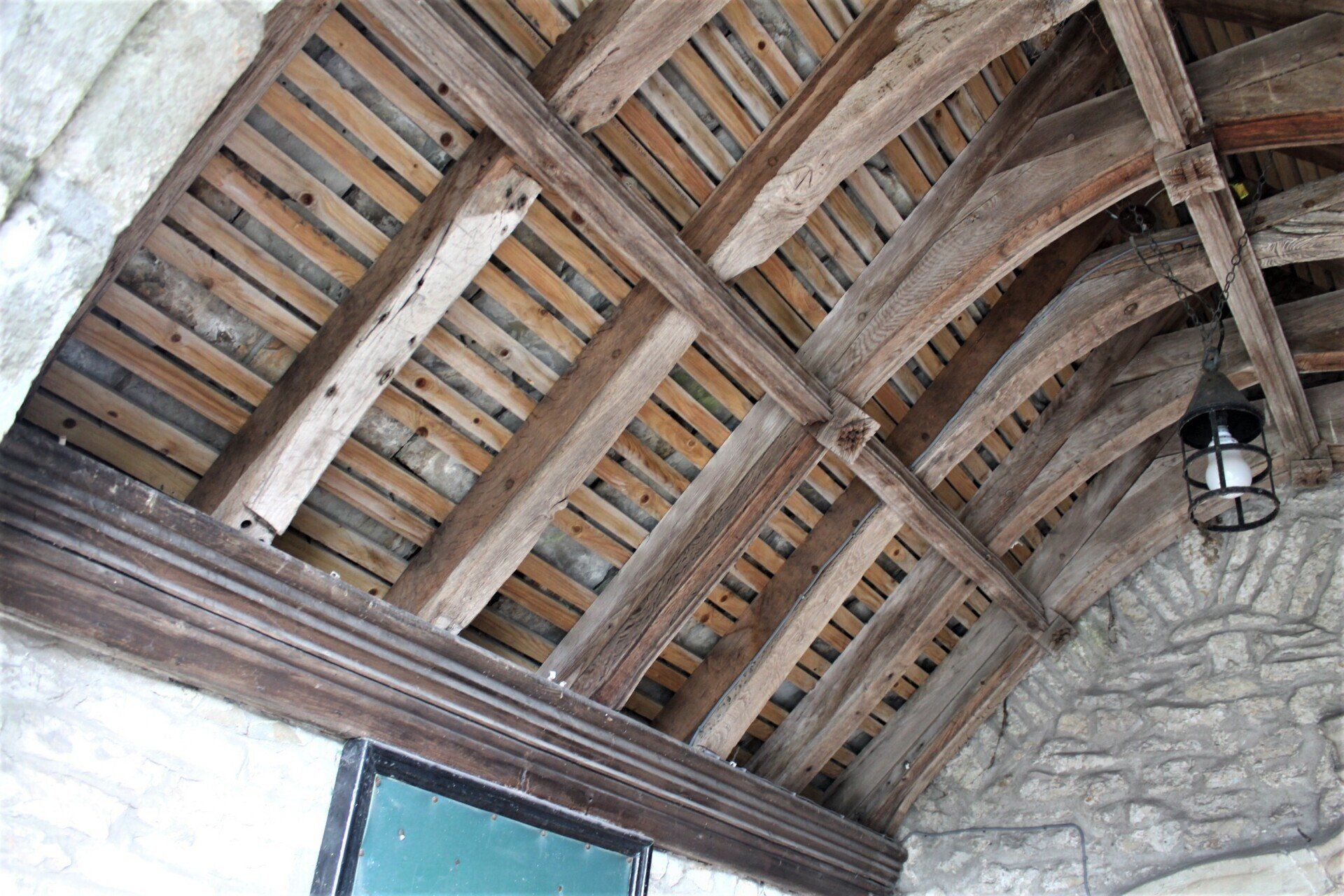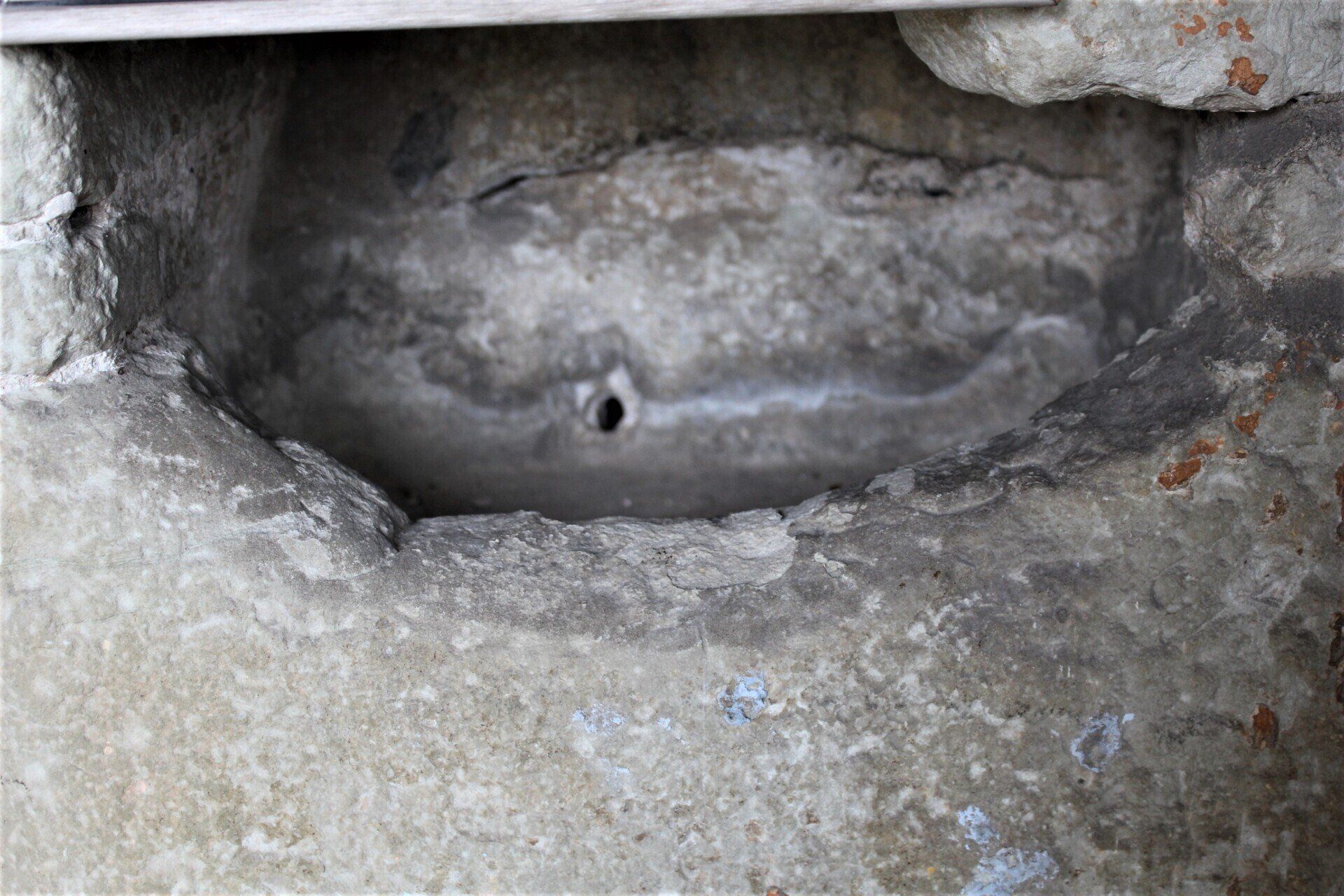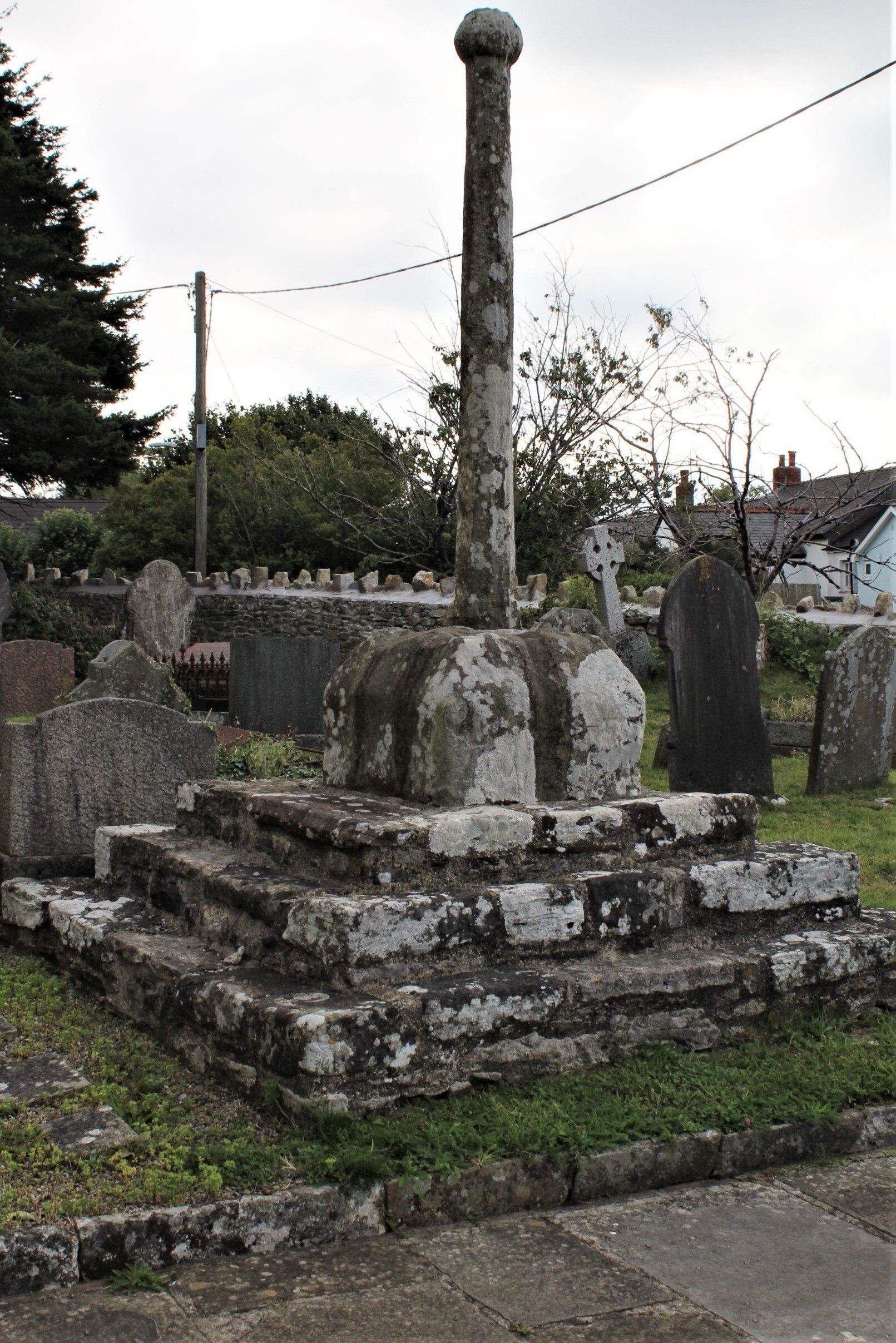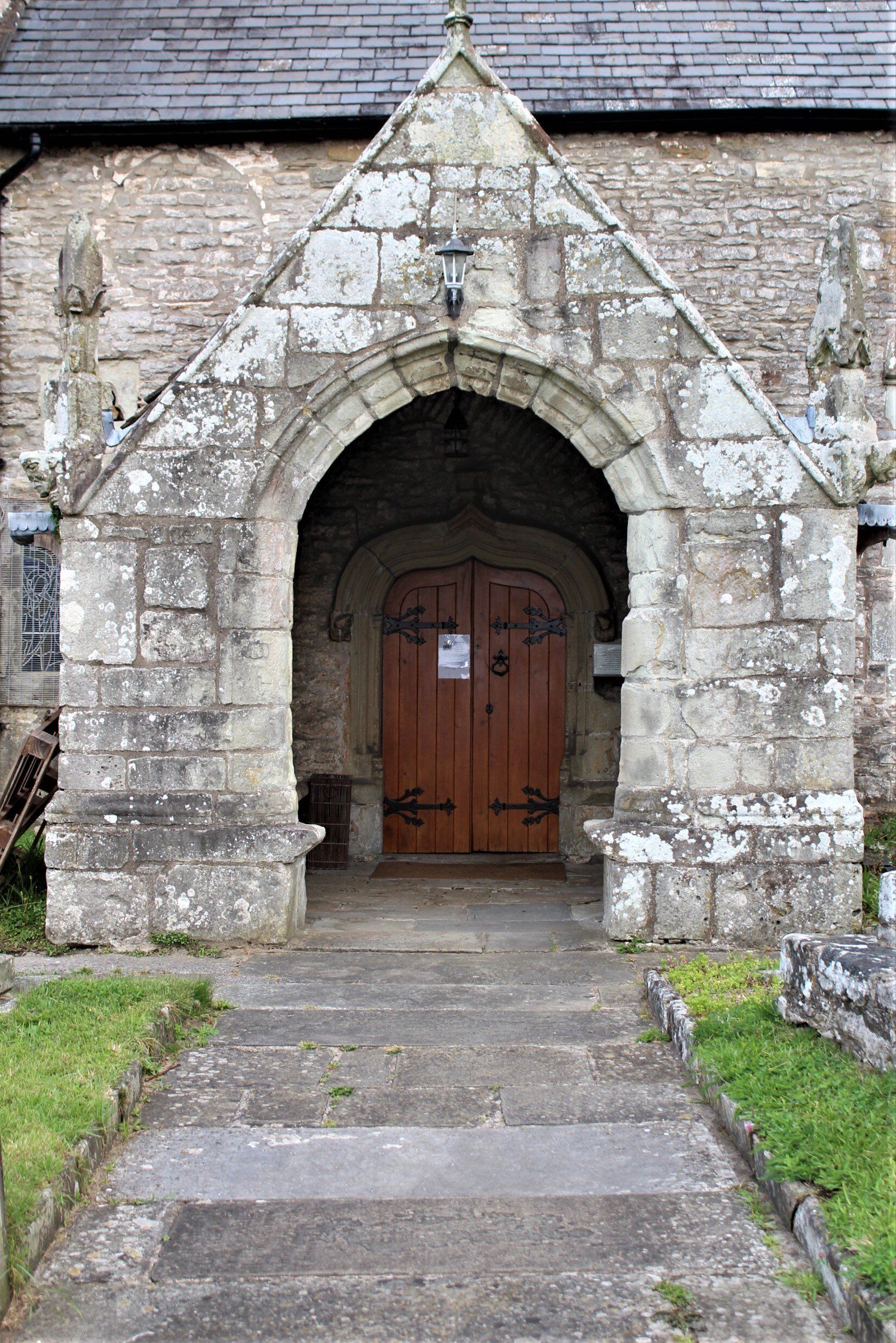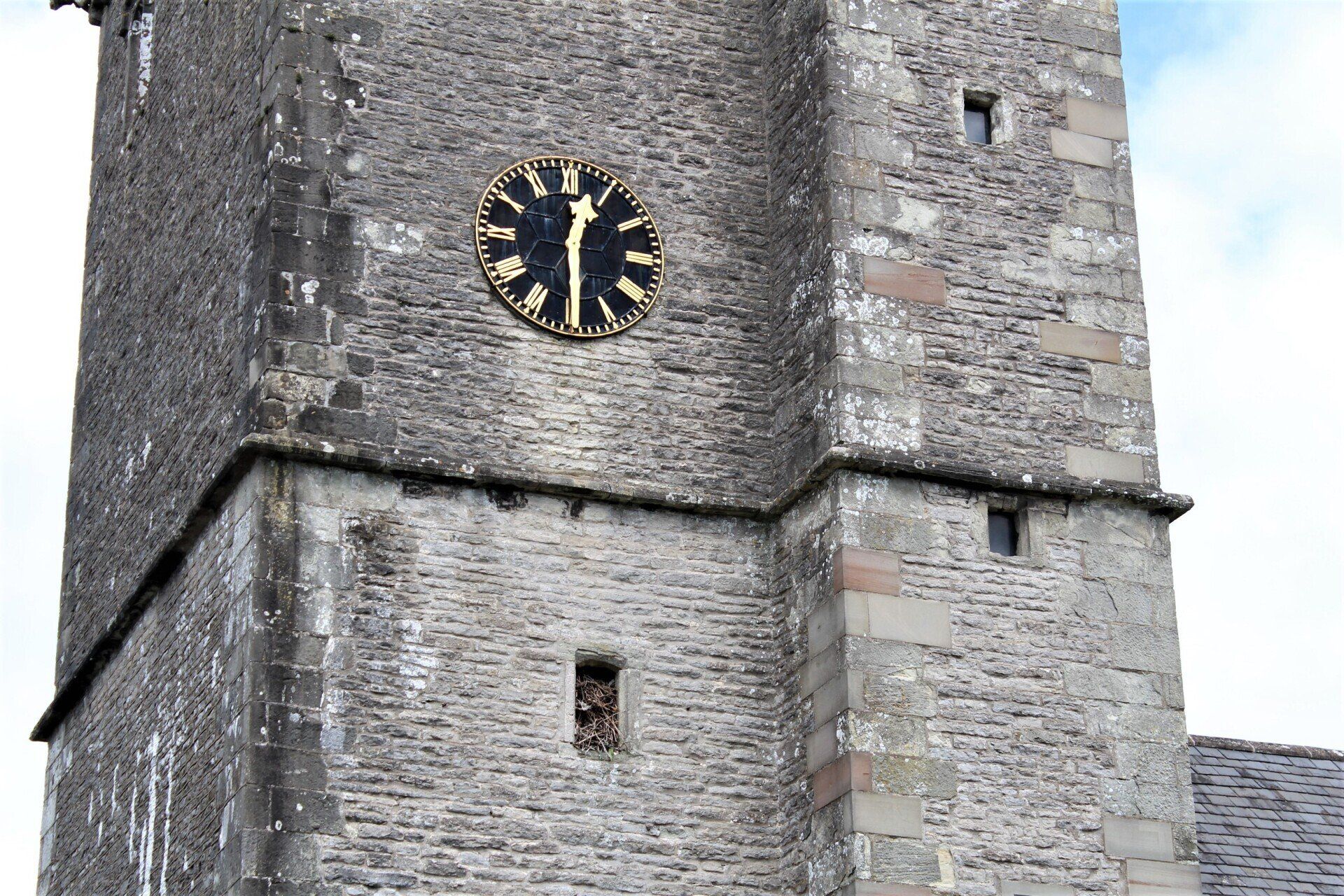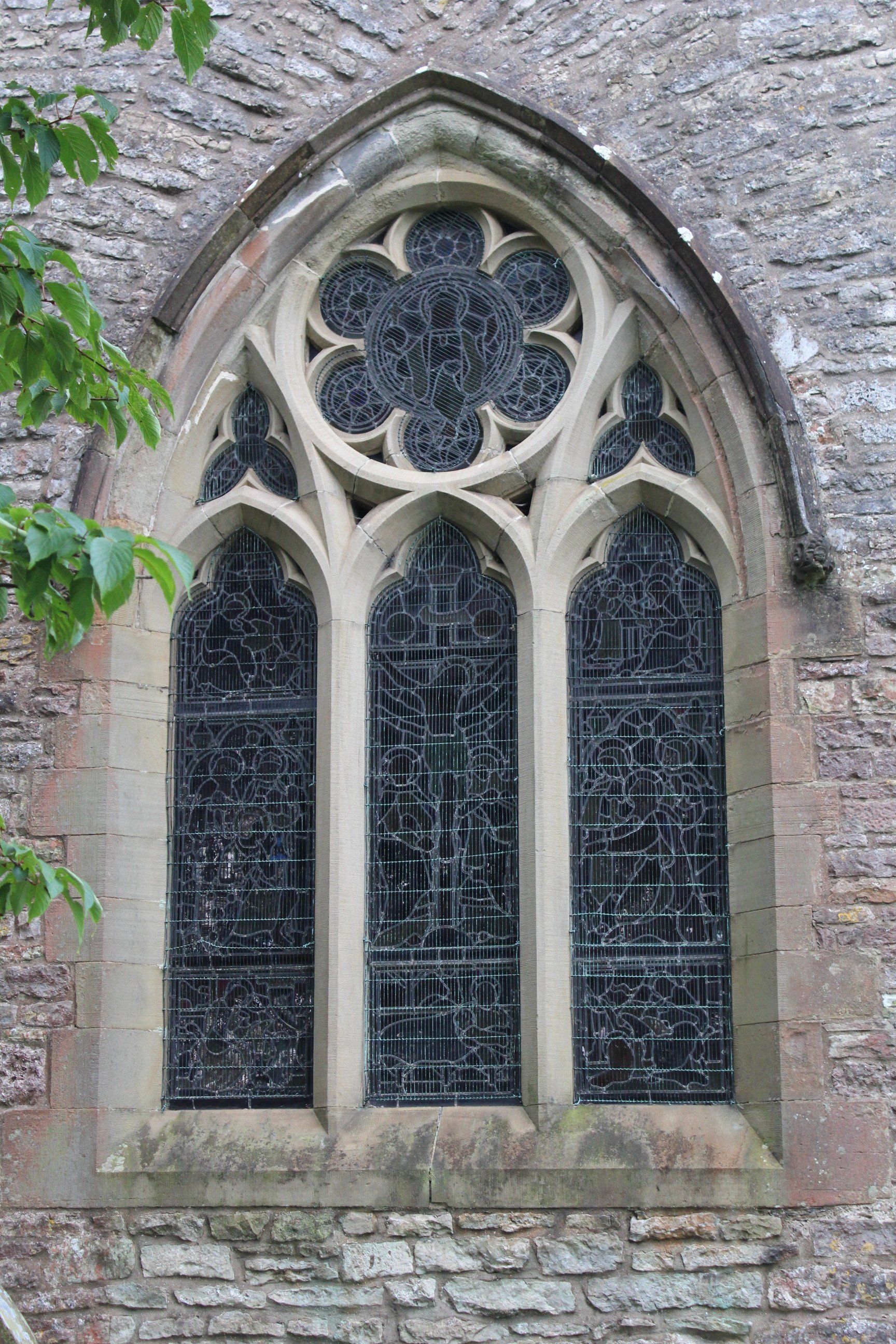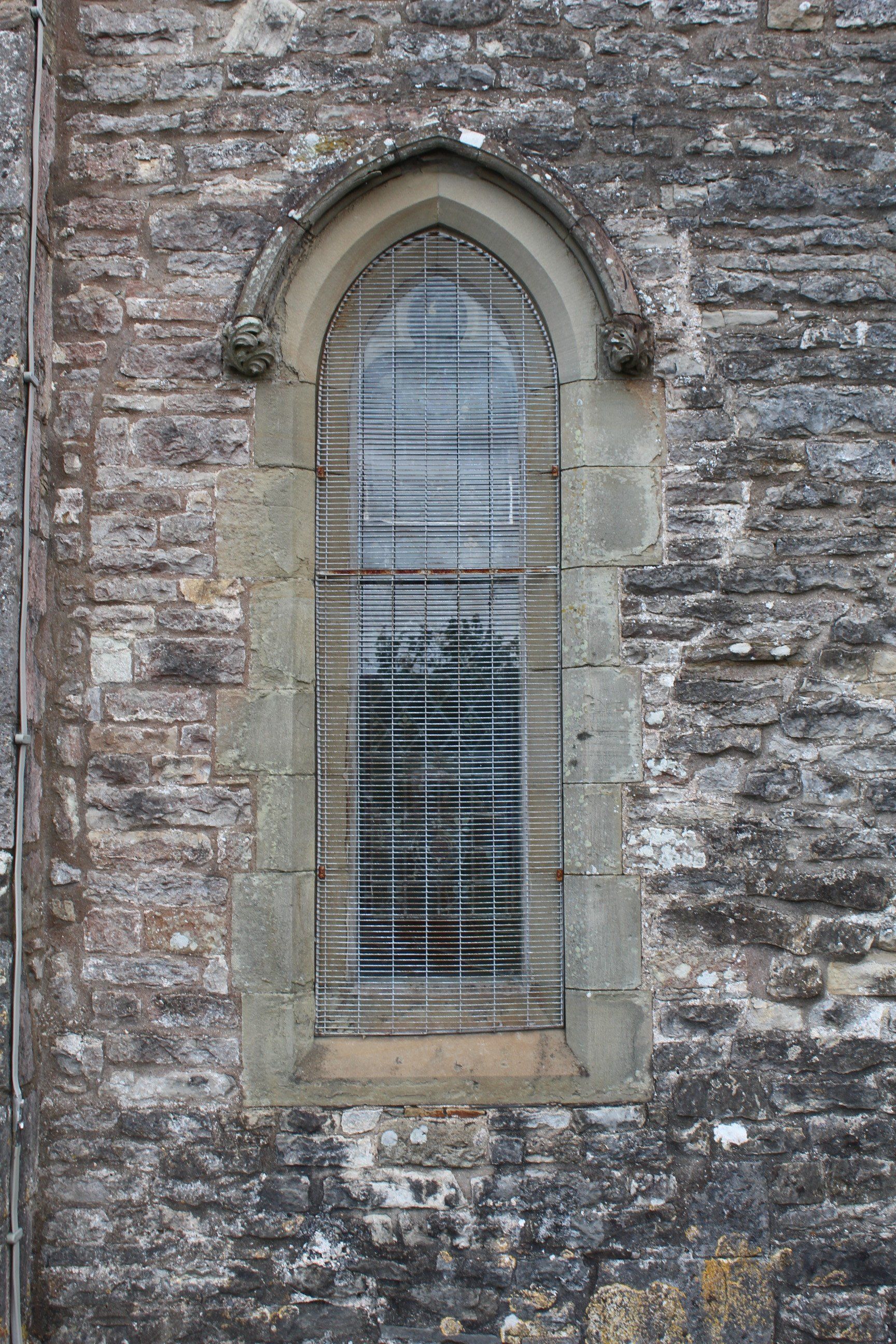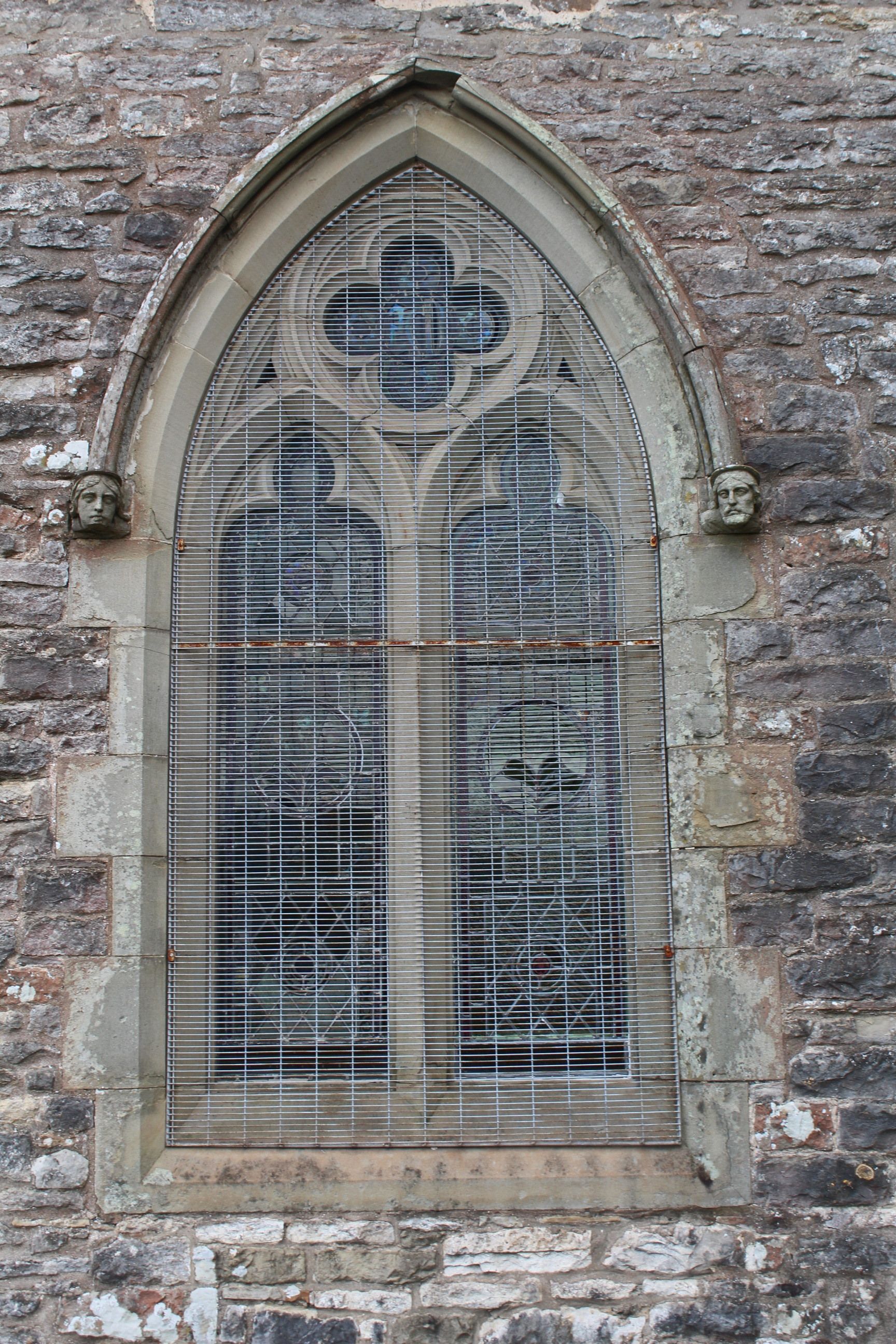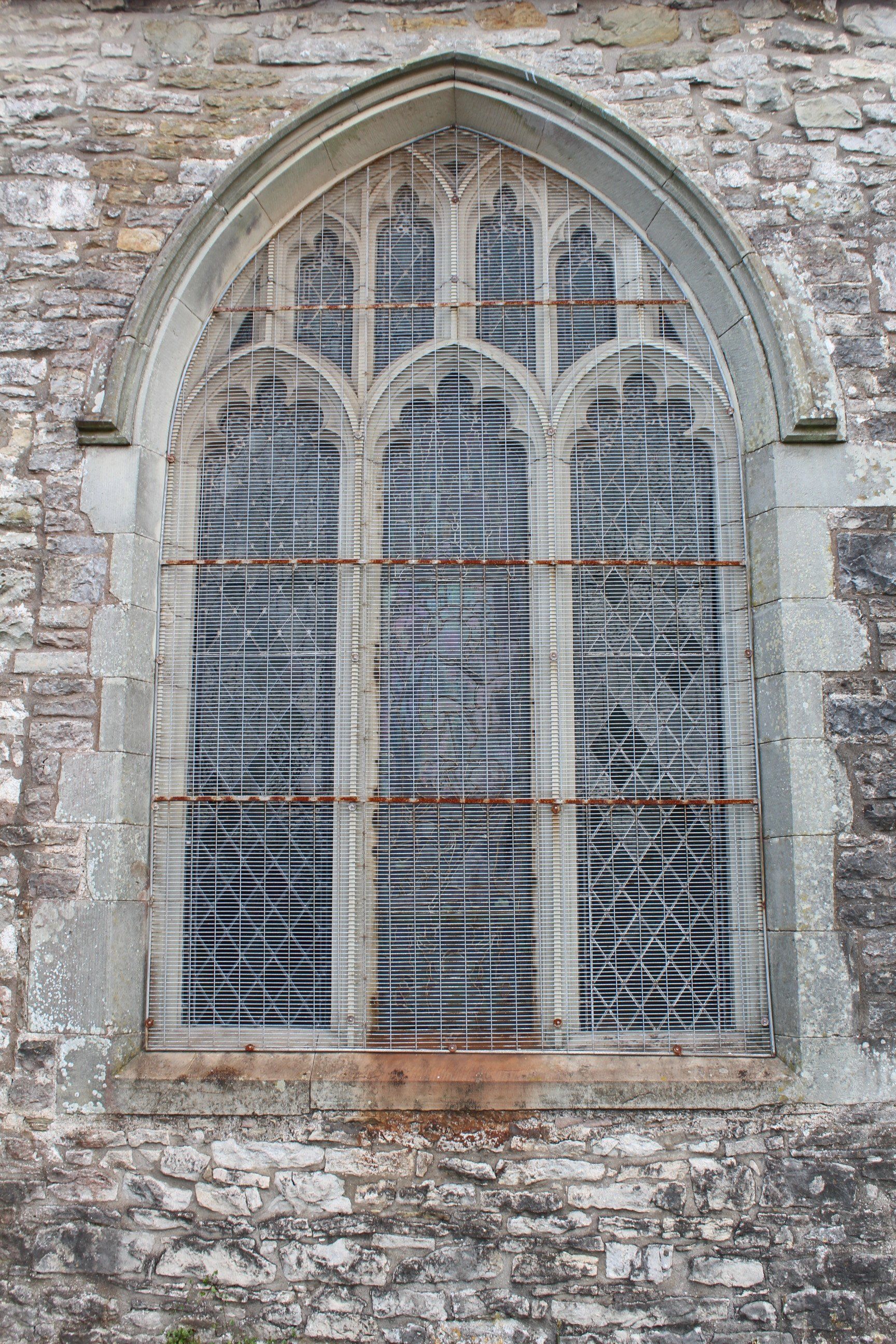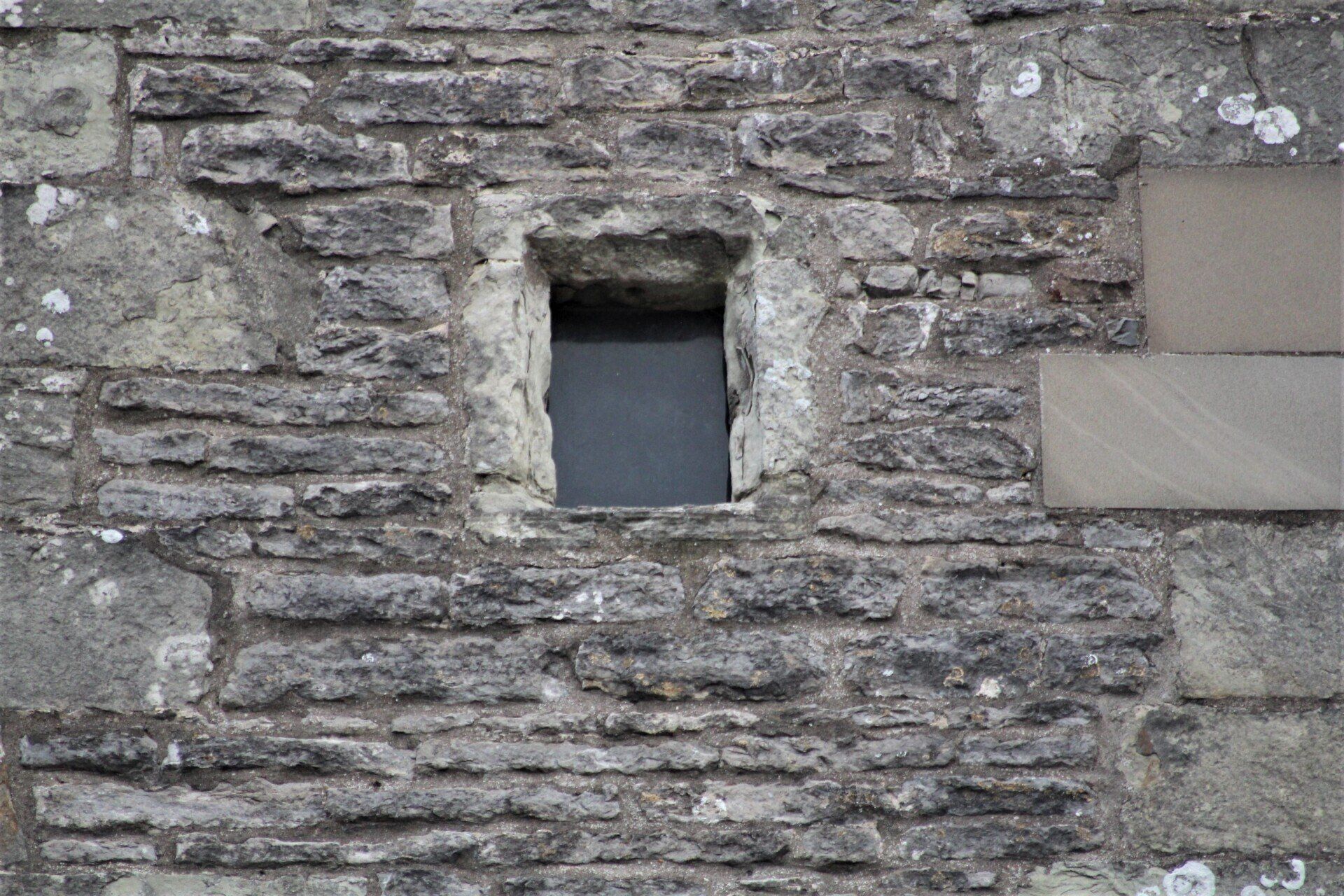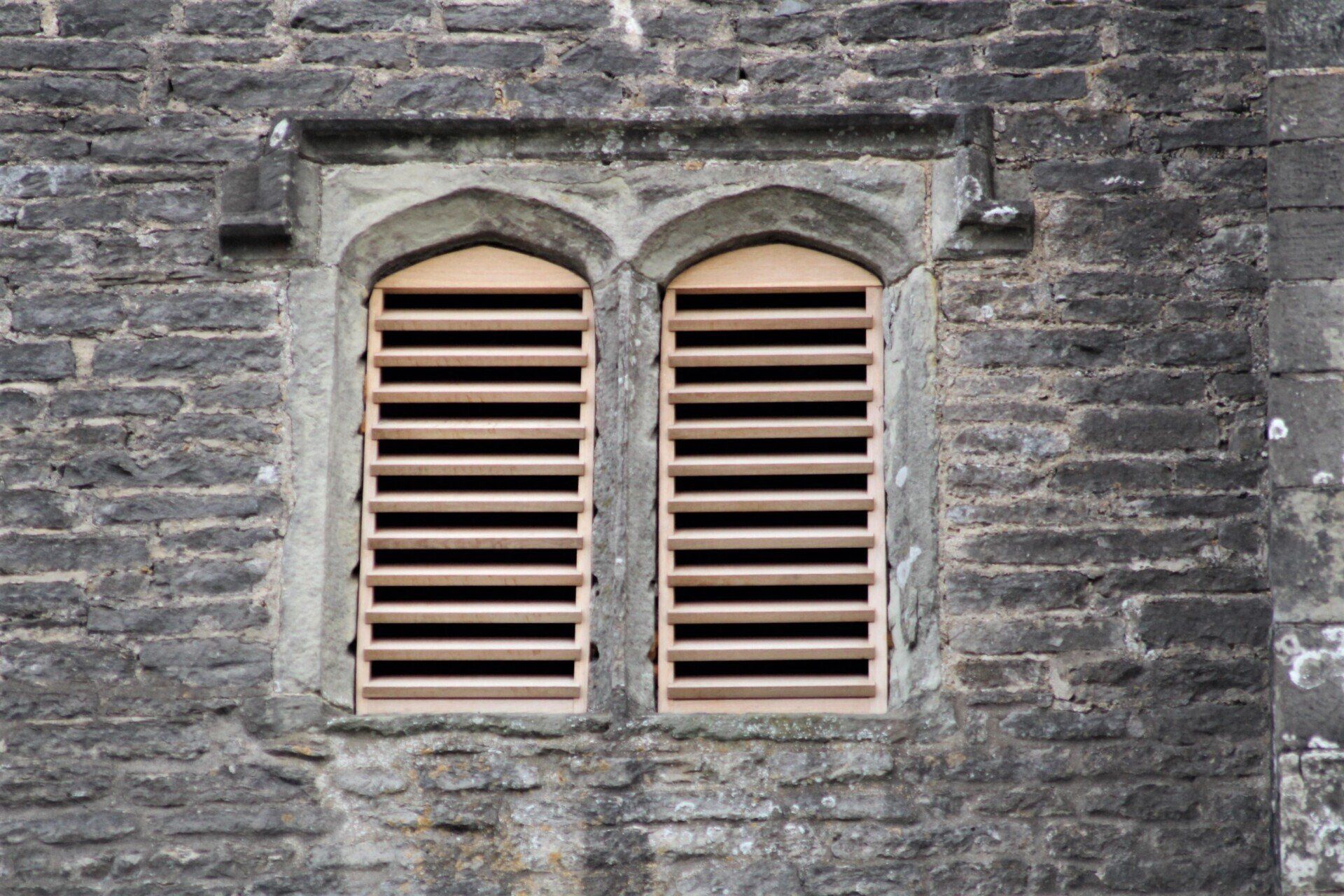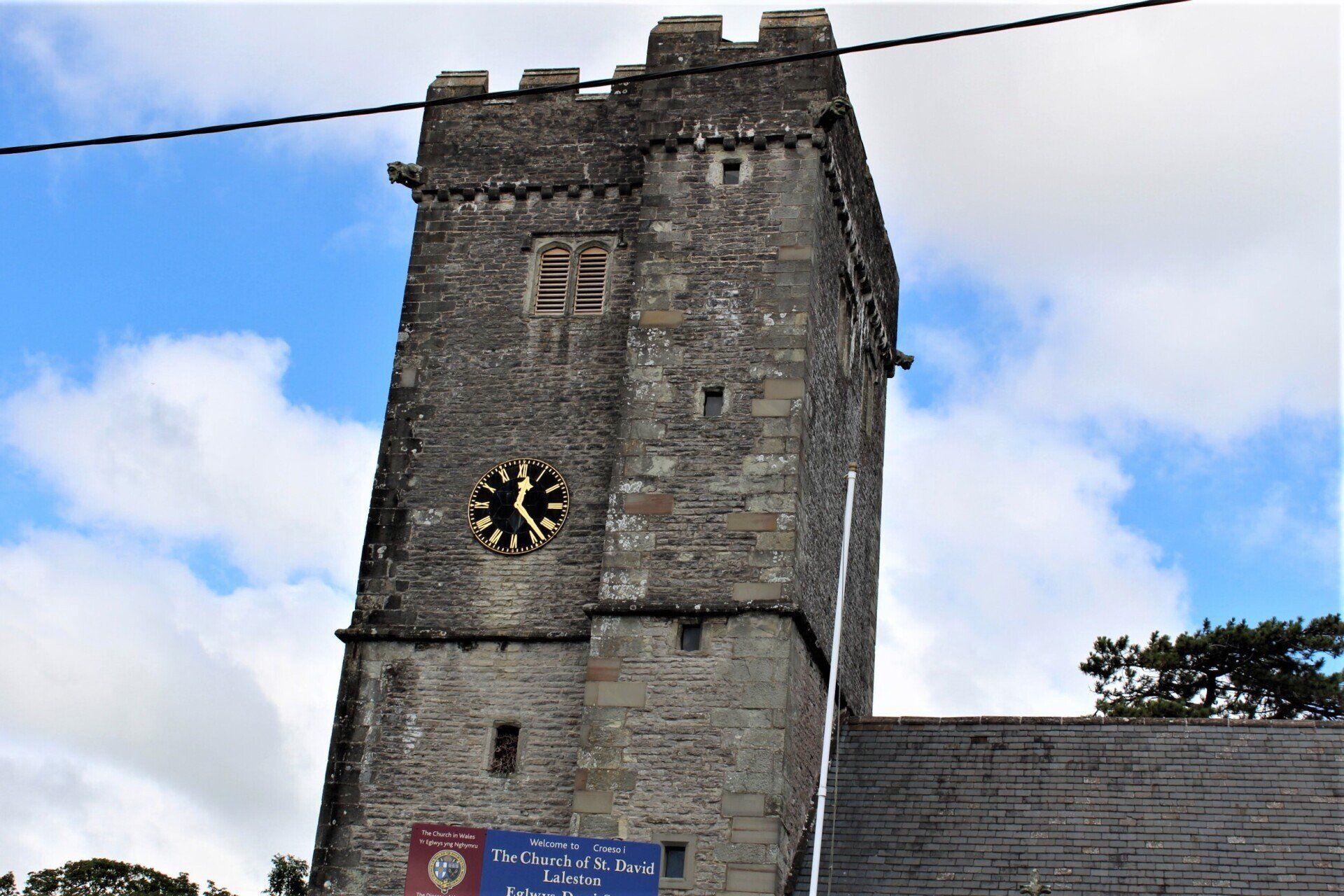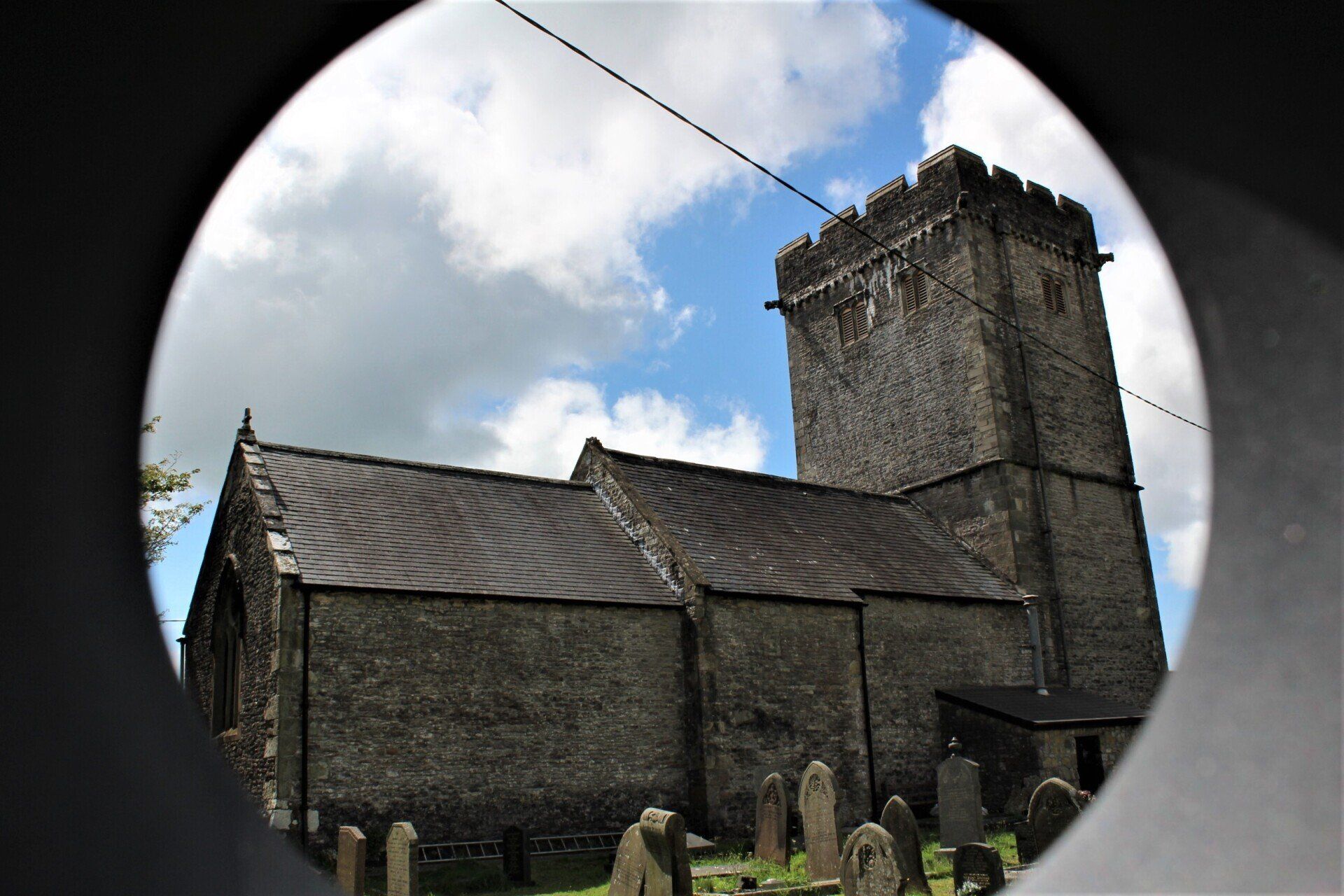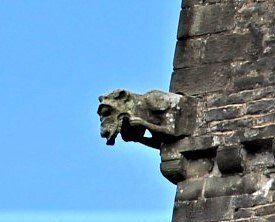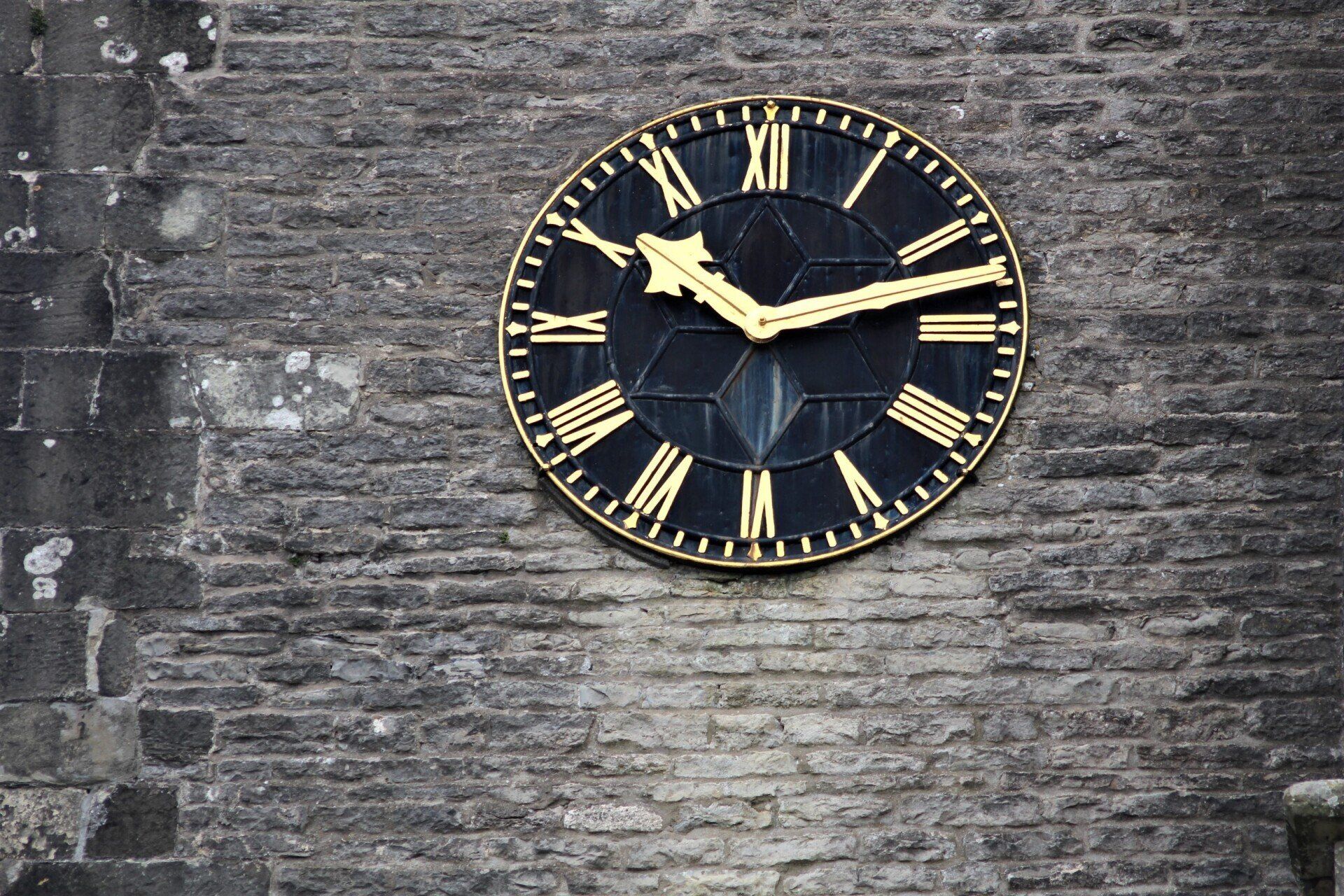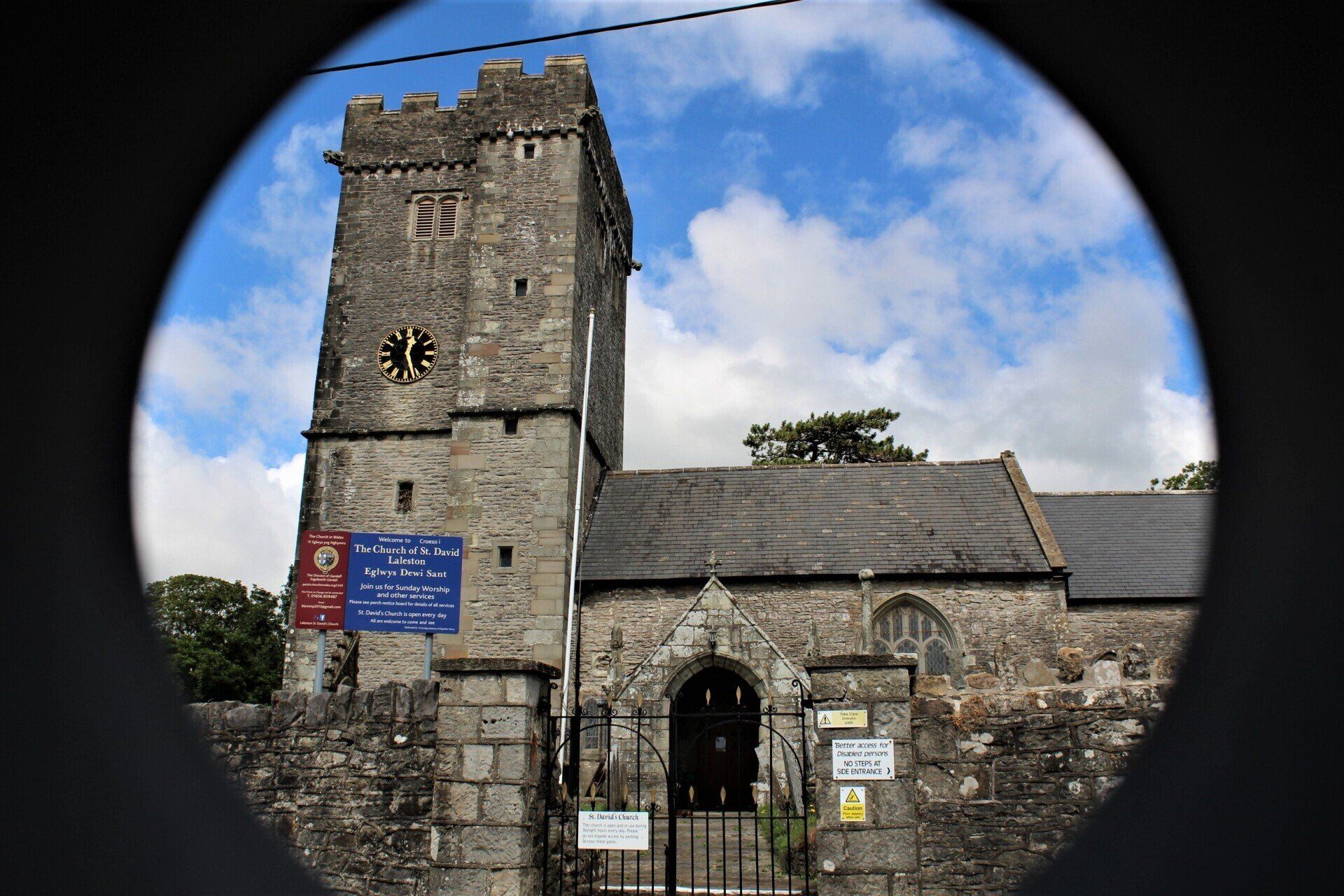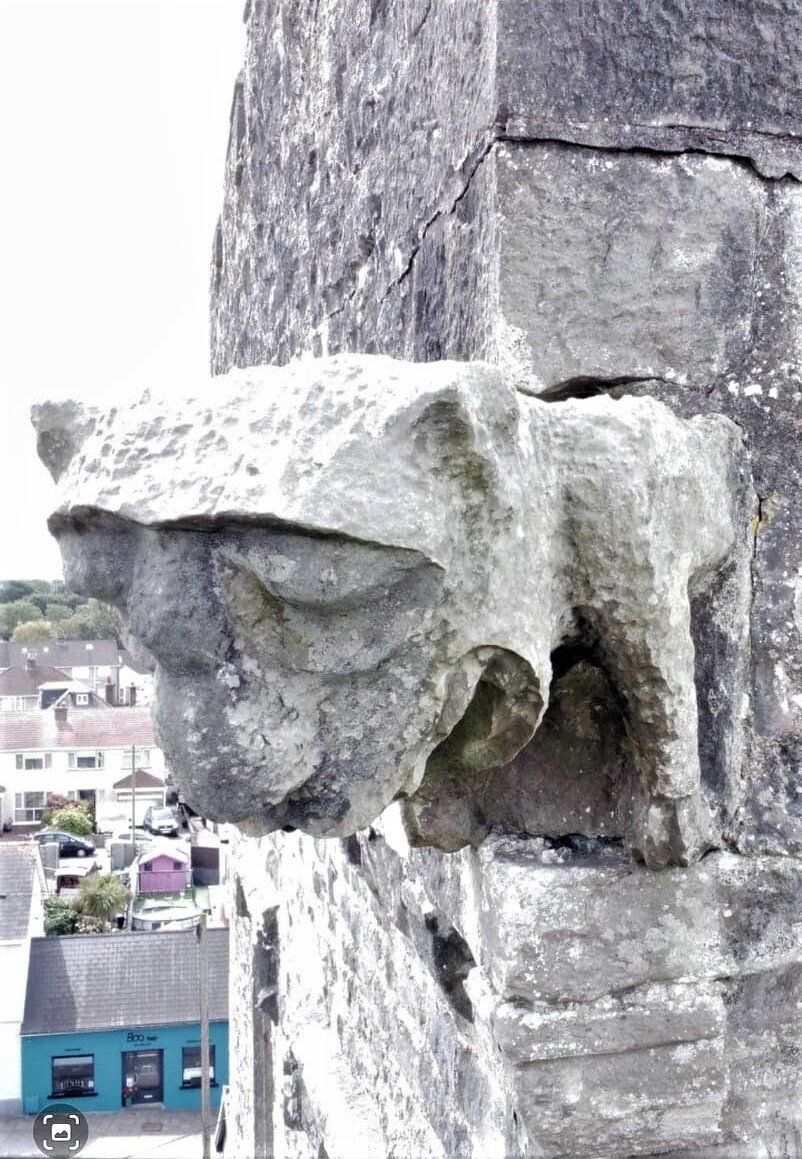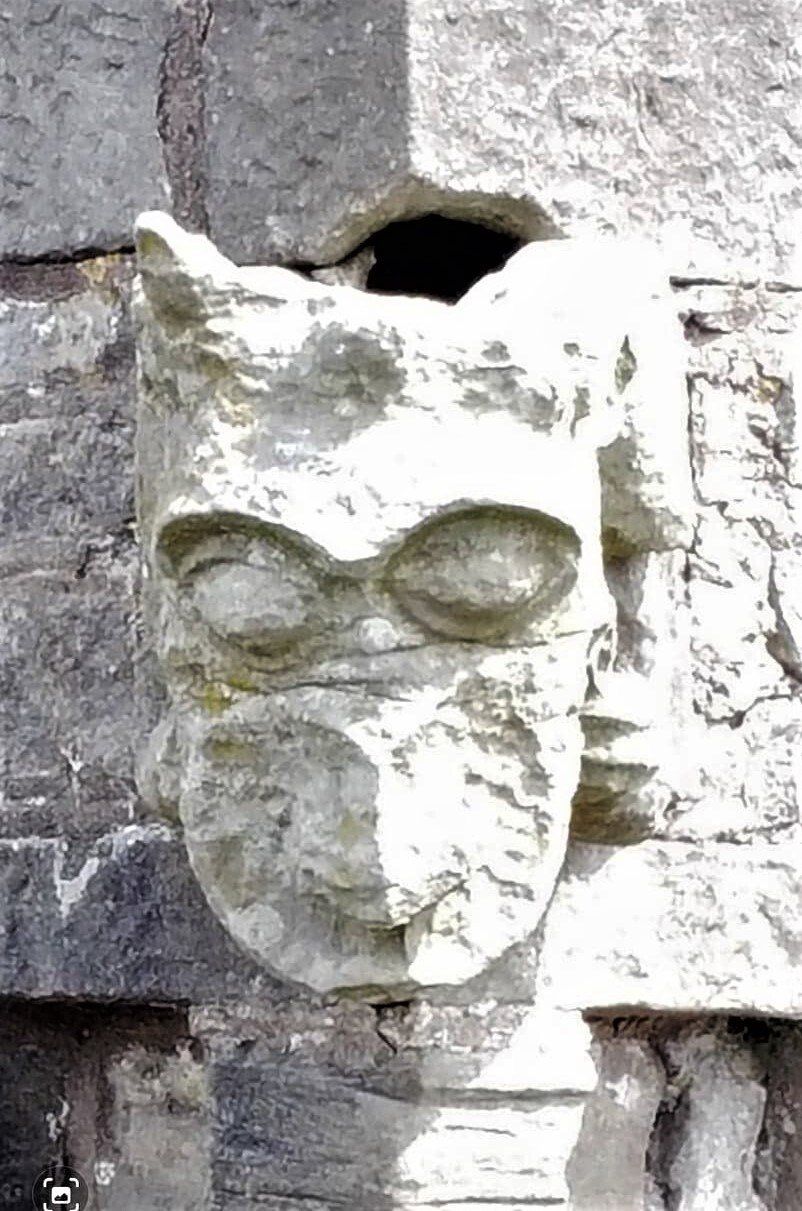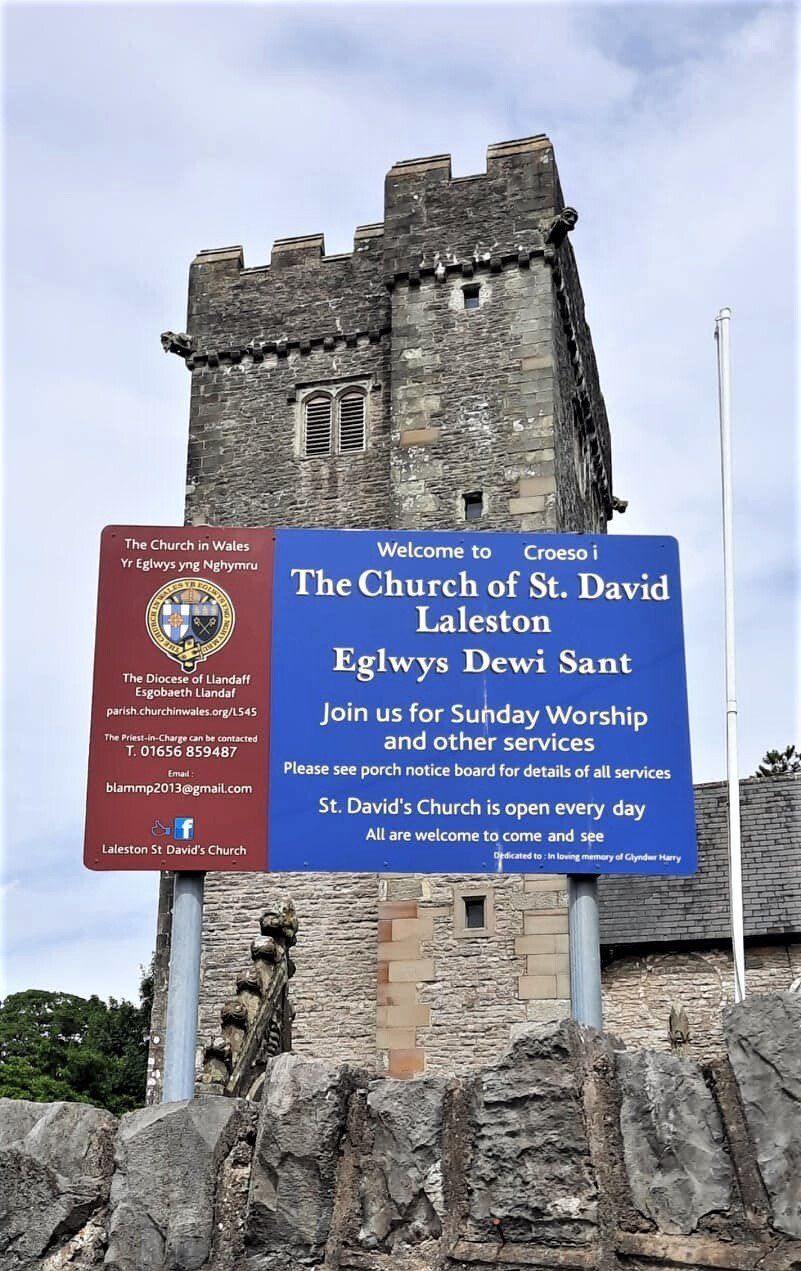Laleston
A Village Full of HistorySt Davids Church
A History of St David's Church
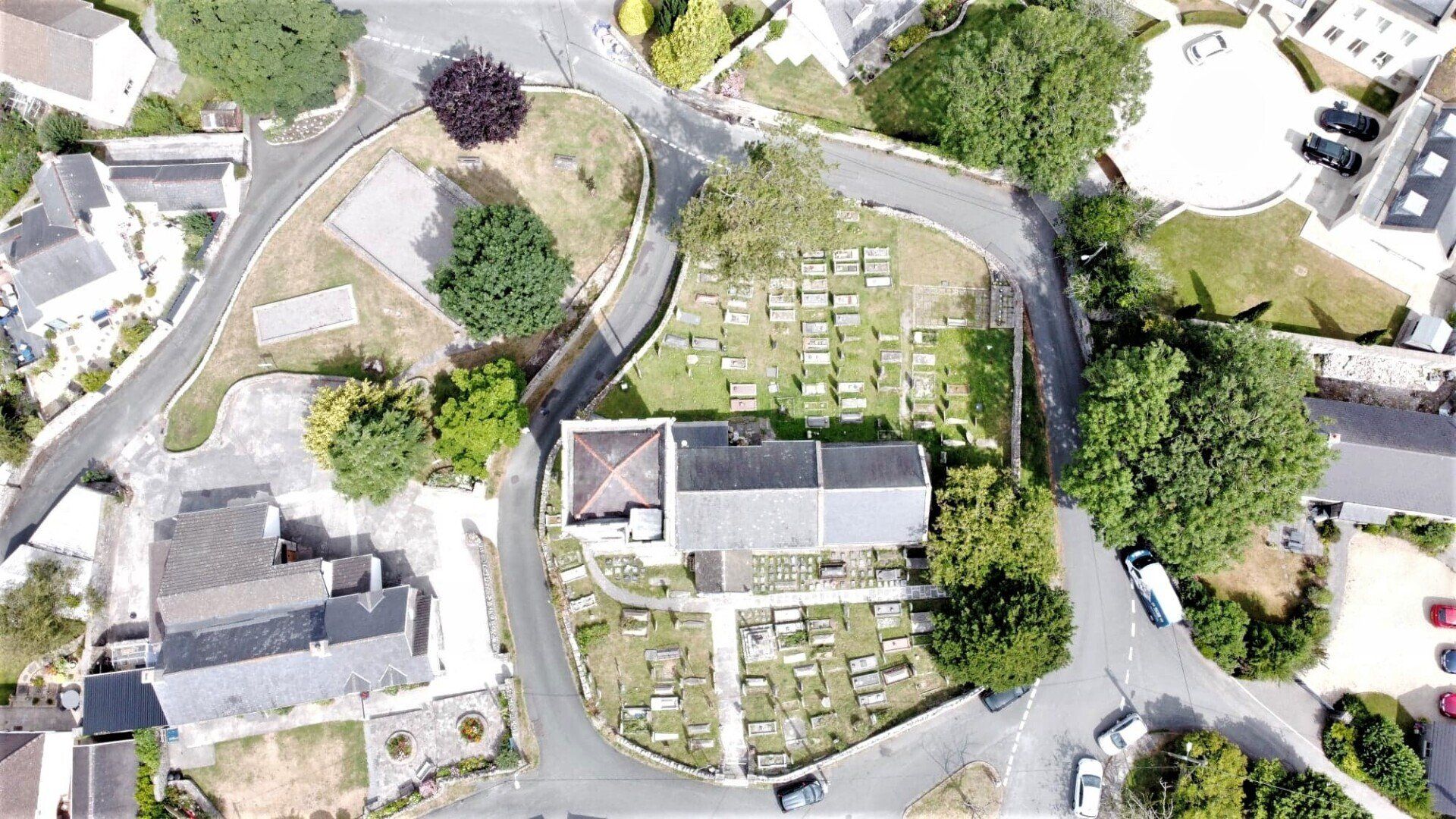
Although Christianity came to Wales in the 2nd or 3rd centuries, it was some time before the Church was established at Laleston. The name comes from the community being "Lageles's ton" (Farm). William Thomas Lageles gave land to Margam Abbey in the 13th Century. Lageles may be Anglo-Norman or Anglo-Scandinavia.
The Church of St David is older, As a Grade I listed building it is protected.
It is known that a Roman track left the Margam to Newcastle road at Llangewydd and passed through to Ewenny and Merthyr Mawr. This was called Broadway, it is interesting to refer to the present Broadway and to Broadlands Farm and house which are situated along the line of this track. There is evidence for the spread along such trackways of Churches: Dedicated to St David (Laleston) and St Teilo (Merthyr Mawr). These dedications come long after the the Saints lived but they are nevertheless pre-Norman and can be dated AD700-900, possibly nearer AD700.
This then is the origin of the Church of St David at Laleston, although the former Church at Llangewydd may be earlier.
Of the pre-Norman Church there are no certain remains; probably It was built of mud and wood, there is evidence that this mud Church was rebuilt in a grander style around 1186.
In 1226 outraged Welshmen declared war on the Norman conquerors and burnt St Nicholas, Newcastle and Laleston.
It is because of these fierce attacks that Laleston possesses a fortified tower of immense strength which is out of proportion with the rest of the Church.
During the 14th to 15th century there was a large scale rebuild of Laleston Church. Much stonework now visible was obviously taken from an earlier site. Maybe Llangewydd was pulled down and the stone re-used, it seems that this was the case as little else would account for the peculiar mixture of stones in the present Church, A close inspection of the tower will show that the lower half at least has been rebuilt in different stone, perhaps the old porch was here at the time. The rose carvings on the windows of the tower and the south niche of the nave are also suggestive of this period.
Extensive restoration work to the tower was carried out in 1989.
The bell tower posseses Four Bells two of which escaped the attention of the Kings commission in 1552/53, perhaps because they were to large to remove in a hurry. The bells rang in diameter from 31 1/2" to 41".
1. "Virginis egregie vocor campana marie" (I am called the bell of the most excellent Virgin Mary) - Pre-reformation.
2. "D.E., D.I., I.I., W.E., W.T., T.H., T.C., T.L., I.T., W.I., GARD 1647 TIS." This has a coinof the reign of King Charles I stamped on it. (Probably the letters are the initials of the donors.)
3. "Sancte Michael, ora pro nobis" ( Saint Michael pray for us.) - Pre-reformation.
4. "Thos Edmondes, Gent., Thos Pritchard, Ch.W. E.E. 1719."
The bells were rehung in a new frame and adjusted, the belfrey given a new floor, and the tower put into repair and given a new roof in June 1906.
The picture on the left was taken during restoration work around 1949/50.
Rear View
Gallery
-
Button
The South Porch to St Davids Church.
-
Button
The original stone benches on both left and right of the porch.
-
Button
To the right of the arched entrance there is a Stoop set in the wall.
-
Button
The original stone benches on both left and right of the porch.
-
Button
The Original stone arch forms the entrance to the porch.
-
Button
A section of the Arched timber roof in the porch.
-
Button
To the right of the arched entrance to the Church there is a Stoop set in the wall. The stoop is unusual as it is a double, backing onto another inside the Church.
Wayside crosses mostly date from the medieval period. This is Grade II listed
The South Porch
The Porch is not as old as the rest of the building probably 14th or 15th century. Porches were added to Churches to protect the clergy and others from the weather as they gathered outside the doors to the Church. Often the vicar was the only one in the community who could read and write. The legal title of a priest is "Clerk in Holy Orders". So it was here that people met to have their letters written for them or to have them read . Here also disputes would be settled and other non-ecclesiastical matters dealt with. Laleston St Davids Church still has it's original stone benches which can be seen in the gallery above along with a picture of the 'Stoop' which is to the right of the doorway.
A Stoop is a basin for holding Holy water for the use of those entering the Church. It is derived from the fountain in the old basilicas in which the faithful washed their hands and face. Usually of stone and built into a niche. This Stoop is very unusual as it is a double stoop being fed from one inside the church.
The Tower Clock
The tower clock was a gift by Sarah Ann Blandy. The makers were John Smith of Derby and it is dated 1910.
The Victorian clock in Dunraven place Bridgend was also supplied by John Smith is currently fitted with a self-start, synchronous, electric, movement, with an Inverter Charger System to carry it through power failures. This was installed by
Smith of Derby who, have serviced the clock for many years.
The Smith of Derby Group’s portfolio of clock makers includes five of the most iconic and reputable names in British horology. They are; John Smith & Sons 1856, James Ritchie & Son, 1809, William Potts & Sons, 1833, J B Joyce & Co, 1690, and G&F Cope & Co, 1845. Collectively, these prominent clock makers form what is now The Smith of Derby Group. This stable of clock makers treasure time by creating, servicing, preserving, and restoring some of the greatest public clocks in the UK and around the world. As the UK’s leading clock repairers, restorers and conservation specialists, they are proud to have been serving the horological community for over 150 years.
Gallery 2
-
Button
The bricked up entrance to the fortified tower on the side of the building was the entrance to a crypt beneath the grounds.
-
Button
One of the Bell towers windows.
-
Button
One of the Bell towers vents behind which the four bells are hung and give a clear ring every quarter hour.
-
Button
A view of the bell tower and clock which strikes every quarter hour.
-
Button
Rear view of the church.
-
Button
There are four gargoyles one on each corner of the tower.
Gargoyles have water spouts to drain the water from the stone work.
If they do not have spouts they are called Hunky Punks.
-
Button
A closeup of the clock installed in 1910 which was donated by Sara Blandy
-
Button
The entrance to St Davids Church.
Wayside Cross
Wayside crosses mostly date from the medieval period and acted as a site for preaching, especially for the itinerant orders, a focus of liturgical processions and to sanctify the churchyard for burial before the development of individual graveyard monuments after the Reformation. The top of the shaft has been remodeled, creating a knob finial possibly from the base of an earlier crucifix. This is Grade II listed.
All Rights Reserved | Laleston Community Council

